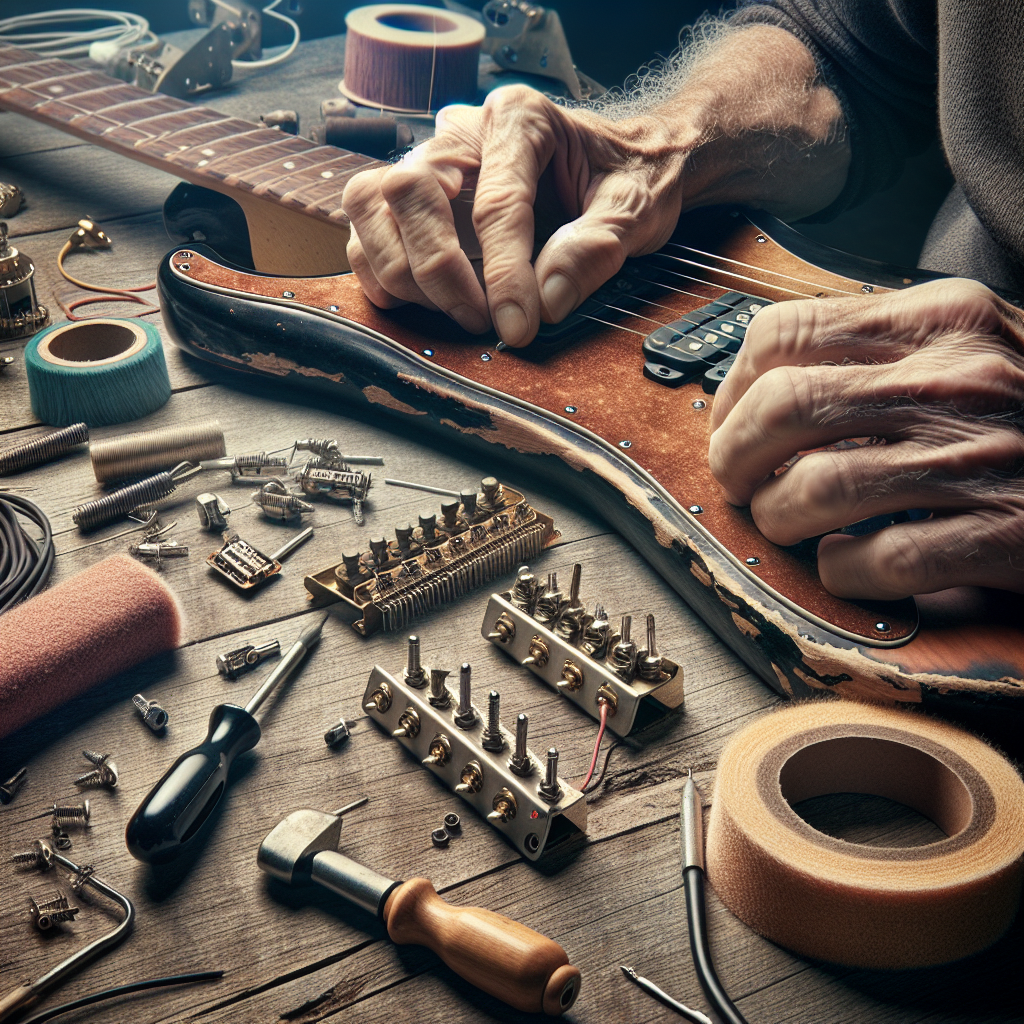
7 Easy Steps to Age Guitar Hardware for a Relic Look: Transform Your Instrument Today!
Guitarists often seek a vintage or worn-out look for their instruments because it adds character and a sense of history. Aging guitar hardware can transform a shiny new instrument into one that looks like it’s been on the road for decades. This process, known as relicing, requires some techniques and tools but can be done at home with a bit of patience. In this guide, we’ll explore how to age your guitar hardware to achieve an authentic relic look.
1. Gather Your Materials
The first step in the relicing process is gathering all the necessary materials. You’ll need:
- White vinegar or muriatic acid
- Rubber gloves
- A glass or plastic container with a lid
- Sandpaper or a Scotch-Brite pad
- Safety goggles
- Masking tape
Safety is paramount during this process. Always work in a well-ventilated area and wear gloves and goggles to protect yourself from fumes and sharp edges.
2. Prepare the Hardware
Before starting the aging process, remove the hardware from your guitar. It may include the bridge, tuning pegs, control knobs, and strap buttons. Use masking tape to cover any areas you don’t want to age, such as threaded parts or sections that need to stay shiny for functionality.
3. Sanding for Initial Wear
Use sandpaper or a Scotch-Brite pad to lightly scuff the surfaces of your hardware. Focus on areas that would naturally show wear over time, such as edges and corners. This pre-treatment helps the acid or vinegar create more realistic aging patterns.
4. Acid Treatment for Oxidation
Vinegar or muriatic acid can speed up oxidation. To use vinegar, simply submerge the hardware in the liquid for several hours to achieve your desired look. If using muriatic acid, place the hardware in the container and carefully introduce a small amount of acid, keeping in mind the need for safety precautions due to stronger fumes.
Ensure the container is sealed and left undisturbed until the hardware reaches the desired level of aging. Check the progress frequently to avoid over-aging your pieces.
5. Neutralizing the Chemical Reaction
Once you’ve achieved the desired level of oxidation, it’s crucial to stop the chemical reaction. Remove the hardware from the acid or vinegar and rinse thoroughly with water. Neutralize any remaining acid with a baking soda solution, and then rinse again with clean water.
6. Patina Enhancements
To add further aged character, consider applying shoe polish or a dark wax over the hardware. This process can deepen the patina and offer a more authentic vintage look.
7. Reassemble Your Guitar
After ensuring all the hardware is dry and the desired aesthetics are achieved, reassemble your guitar. Enjoy the new vintage look and the character it adds to your instrument.
FAQs
What are the main reasons for relicing guitar hardware?
Relicing is primarily done for aesthetic purposes. Musicians may prefer the vintage look for personal style or to match an instrument’s vintage body. Relicing can also enhance resale value for fans of vintage aesthetics.
What materials work best for aging guitar hardware?
White vinegar and muriatic acid are two common substances used for aging guitar hardware. While vinegar is gentler and more accessible, muriatic acid acts faster but requires more caution due to its potency.
How long does it take to age guitar hardware?
The time varies based on the compound used and the metal type. Vinegar may take several hours to overnight, while muriatic acid can yield results in a shorter time. Always monitor the hardware closely to avoid excessive aging.
Can I age all types of metal on my guitar hardware?
Not all metals age the same way. Nickel, brass, and certain alloys often develop an attractive patina, while stainless steel may resist significant aging effects. Always test a small, inconspicuous area first if unsure.
Is it safe to age guitar hardware at home?
Yes, but safety precautions are essential. Work in well-ventilated areas, use protective gear, and keep children and pets away from working spaces. Properly store or dispose of chemicals when finished.
Can aged hardware affect my guitar’s sound quality?
The aesthetic changes will not significantly impact the sound of your guitar; however, ensure any parts critical to functionality, such as the bridge or tuning pegs, remain in good working condition.
In conclusion, aging your guitar hardware can significantly enhance your instrument’s aesthetics, offering a unique, personal touch. By carefully following these steps, you can achieve a professional relic look at home and enjoy the satisfaction of a custom-tailored instrument. Consider exploring more about this process from comprehensive resources like Premier Guitar.